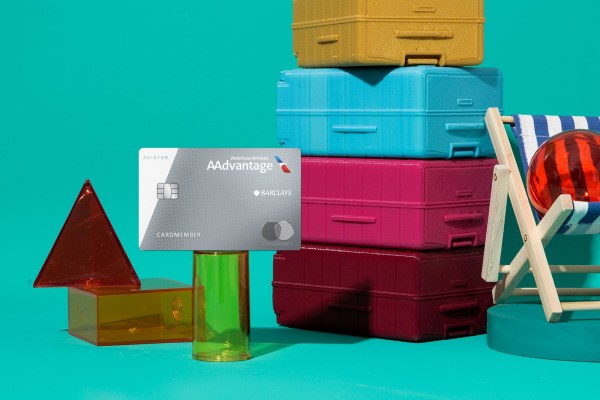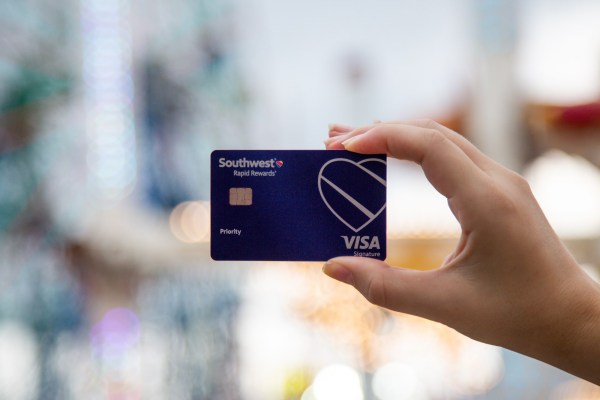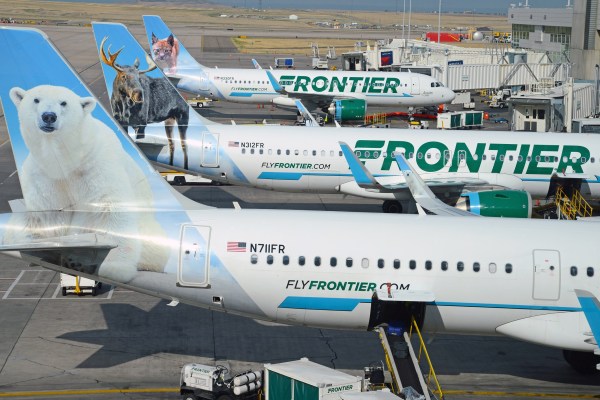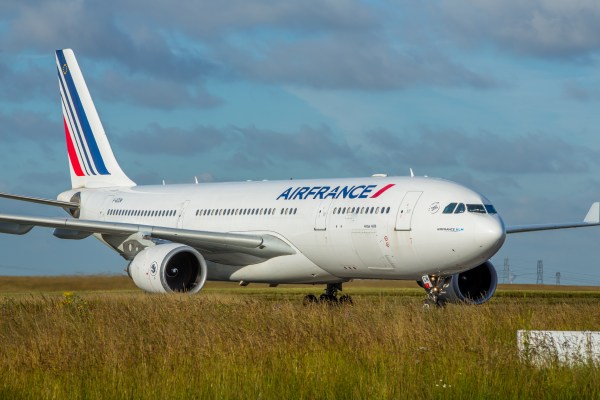
Earning airline elite status seems to be getting more and more difficult each year. The legacy carriers — American Airlines, Delta and United — have all instituted spending requirements in addition to flight metrics — and then raised them. That’s to say nothing of the huge overhaul United has planned for its MileagePlus Premier status program in 2020.
The good news is that as many airlines have chosen to focus on revenue and spending as components of earning elite status, several airline credit cards have added an elite-qualification element to their benefits packages.
No airline credit card currently available to new applicants confers automatic elite status, and only three let you earn it solely through spending. However, many others do allow cardholders to earn incremental credits toward elite status that might be just be the boost you need to jump into the elite ranks or hit a higher tier.
Here are seven of the best airline credit cards to help you reach elite status faster, and what type of traveler each might be best for.

High-spending, low-flying: Delta Reserve® Credit Card from American Express
The Delta Reserve’s highest-profile perks are the fact that it will get you into Delta Sky Clubs when flying the airline (and Centurion Lounges starting Jan. 30, 2020), along with an annual domestic companion ticket. However, the card offers Medallion Qualification Miles (MQMs) that go toward Delta Medallion status as part of its welcome offer and as a bonus for hitting certain spending thresholds.
The card’s current welcome offer is 75,000 bonus SkyMiles and 10,000 Medallion® Qualification Miles (MQMs) if you spend $5,000 on purchases in the first three months. Cardholders who spend $30,000 or more on eligible purchases using their card in a calendar year can earn 15,000 bonus miles and 15,000 MQMs. Hit $60,000 in spend in a calendar year and you can take home an additional 15,000 bonus miles and another 15,000 MQMs. That means you can reach Silver Medallion status just through spending. Silver status is achieved by either flying 25,000 MQMs or 30 Medallion Qualification Segments (MQSs) and with $3,000 in Medallion Qualification Dollars (MQDs) or an MQD waiver.
However, as part of the major changes Delta and American Express announced to their card lineup, the Reserve’s MQM-earning benefit will change dramatically next year. Starting in 2020, cardmembers who hit $30,000 in spend during a calendar year will earn 15,000 MQMs but not bonus miles. At $60,000, they will receive another 15,000 MQMs. Now for the big news: those who spend $90,000 or more on their card will receive another 15,000 MQMs, and if you get to $120,000 in purchases, you can take home yet another 15,000 MQMs. That means you can earn all the way up to Gold Medallion status without even flying the airline. That might not be entirely logical – after all, what good is Gold Medallion status if you’re not actually flying much? But it’s still something to consider. This card’s annual fee is going up from $450 now to $550 (see rates and fees) next year, too.
The Delta Reserve for Business Credit Card will also be adding the upper two MQM-earning spending tiers starting next year, along with other benefits such as earning 3x miles on Delta purchases and 1.5x miles on all purchases after $150,000 in spending.
Runner up: Platinum Delta SkyMiles® Credit Card from American Express
With an annual fee of $195 (going up to $250 next year) (see rates and fees), this mid-range Delta Amex might suit some flyers better. For now, it, too, is extending a welcome offer of 75,000 bonus miles and 5,000 Medallion® Qualification Miles (MQMs) when you make $3,000 in purchases in the first three months. You can also score a $100 statement credit after you make a Delta purchase with your new card within your first three months.
As for spending boosts, cardholders can earn 10,000 bonus miles and 10,000 MQMs for spending $25,000 or more on purchases with the card in a calendar year and an additional 10,000 bonus miles and 10,000 MQMs for hitting $50,000. After Jan, 30, 2020, cardholders will no longer earn bonus miles, just MQMs, for hitting these marks.

Mid-range mile-earner: AAdvantage® Aviator® Silver Mastercard®
Though this card is not open to new applicants, you can upgrade to it from the AAdvantage® Aviator® Red Mastercard®. One of the reasons you might want to consider doing so, if you haven’t already, is for its elite-boosting bonus.
Spend $20,000 on the card in a calendar year and you will be rewarded with 5,000 Elite Qualifying Miles (EQMs). Spend another $20,000 and you will receive an additional 5,000 EQMs.
Cardholders who upgraded between Jan. 1 and Oct. 31, 2018, can earn $3,000 elite-qualifying dollars (EQDs) after spending $25,000 in purchases on the card in a calendar year, and an additional $3,000 EQDs for hitting $50,000. If you upgraded after that (and starting for all cardholders in 2020), you can only earn $3,000 EQDs after spending $50,000 on purchases in a calendar year.
The reason this card wins out for American Airlines is that it allows you to earn both EQMs and EQDs rather flexibly, which is great for a card with a $195 annual fee. Plus, you can enjoy up to $25 back a day as statement credits on inflight food and beverage purchases and $50 back each year toward inflight Wi-Fi purchases, plus earn 3x miles on American Airlines purchases, 2x on hotels and car rentals, and 1x on everything else.
Runner up: Citi® / AAdvantage® Executive World Elite Mastercard®
Mastercard®
Citi’s contender for elite qualification carries a $450 annual fee. While that will get you (and possibly a lot of authorized users) into Admirals Clubs, that’s a lot to pay for a card that earns only 2x on American Airlines purchases and 1x on everything else. Its spending-based elite benefit is also not as flexible as the Aviator Silver’s. You can only earn 10,000 Elite Qualifying Miles (EQMs) in one go by spending $40,000 in a calendar year, rather than splitting up the bonus into two tiers.
As a side note, the AAdvantage® Aviator® Business Mastercard® will also let you earn $3,000 EQDs after spending $25,000 or more on purchases with the card in a calendar year.

A-List Achiever: Southwest Rapid Rewards Priority Credit Card
Introduced just last year, Southwest’s high-end consumer card earns 1,500 Tier-qualifying Points (TQPs) per $10,000 you spend in a calendar year on up to $100,000 in spending and 15,000 TQPs. That will get you just about halfway to A-List status with Southwest.
The card also outclasses its Southwest counterparts by offering a 7,500-point anniversary bonus, a $75 Southwest travel credit each cardmember year, four availability-based upgraded boardings per year and 20% savings on inflight purchases. It has a $149 annual fee and is currently offering a sign-up bonus of 40,000 points after you spend $1,000 in purchases in the first three months.
Runner up: Southwest Rapid Rewards Premier Credit Card
Southwest’s $99-per-year card is another good alternative since it offers the same TQP-earning benefit. Its anniversary bonus is only 6,000 points and like the Priority version, it earns 2x on Southwest purchases as well as with car and hotel partners, and 1x on everything else.
The business versions of these two cards -– the Southwest Rapid Rewards Premier Business Credit Card and the Southwest Rapid Rewards Performance Business Credit Card — both offer the same spending-based TQP earning rates.

Mosaic Maven: JetBlue Plus Card
Earning JetBlue Mosaic status is mostly based on spending anyway, since you achieve it either by accruing 15,000 base points (spending $5,000 on JetBlue tickets) or by earning 12,000 base points ($4,000 spending) and flying 30 segments. However, if you have the JetBlue Plus card, you can also reach Mosaic status by spending $50,000 or more on purchases with it in a calendar year.
That’s just one of many outstanding benefits to this card. It earns 6x points on JetBlue purchases, 2x at restaurants and grocery stores, and 1x on everything else. It also offers an annual $100 statement credit toward the purchase of a JetBlue Vacations Package plus 5,000 bonus anniversary points and savings of 50% on in-flight food and cocktail purchases. Right now, it is offering a sign-up bonus of 40,000 points after you spend $1,000 on purchases in the first 90 days. The annual fee is $99.
Runner up: JetBlue Business Card
The no-fee JetBlue Card does not offer a spending-based Mosaic benefit, but the JetBlue Plus Card’s business counterpart does and it is the same as the personal version’s: spend $50,000 or more in a calendar year and Mosaic status can be yours.
Its $99 annual fee and other benefits are mostly the same as the JetBlue Plus, including the inflight savings and $100 JetBlue Vacations package credit. It earns 6x points on JetBlue purchases and its 2x bonus categories are restaurants and office supply stores. Right now, new applicants can earn up to 60,000 bonus points – 50,000 after spending $1,000 in the first 90 days and 10,000 when a purchase is made on an employee card within that same time.

Waiver waverer: United Explorer Card
Until United’s elite status changes go into effect next year, you can still use your United card to waive the spending requirements on all Premier tiers up to and including Platinum Premier, but not 1K. But to do so, you’ve got to spend $25,000 or more on the card in a calendar year.
While you don’t earn any Premier Qualifying Miles (PQMs) or Premier Qualifying Segments (PQSs) through spending, getting out of sometimes onerous Premier Qualifying Dollar (PQD) targets can be very helpful for those who fly inexpensive long-haul fares but have trouble making the PQD spending thresholds. The card has a few other selling points, too, including 2x earning on United purchases, at restaurants and hotels, a Global Entry or TSA PreCheck application fee reimbursement and travel perks like free checked bags and priority boarding.
Runner up: United Club Card
If access to United Clubs is your goal, you might want this $450-per-year card instead. It earns 2x miles on United purchases and 1.5x on everything else, as well as offering the same PQD spending waiver as the Explorer. For that matter, the United Explorer Business Card will also get you out of the PQD spending requirements if you hit $25,000 in purchases in a calendar year. Just remember, all these PQD waivers are ending next year with United’s elite status overhaul.
The information for the United Club card has been collected independently by The Points Guy. The card details on this page have not been reviewed or provided by the card issuer.

Frugal flyer: Frontier Airlines World Mastercard®
The most unique feature of this underrated airline card is that the miles you earn with it are actually both award miles and elite-qualifying miles, so you can earn any level of Frontier status simply based on spending. That’s even easier to do since the card earns 5x miles on Frontier website purchases, 3x at restaurants and 1x everywhere else.
The card also comes with benefits like priority boarding, family mileage pooling and a $100 flight voucher every account anniversary after spending $2,500 or more on purchases during a cardmember year. Right now, it is offering 40,000 bonus miles after spending $500 on purchases in the first 90 days. Its annual fee is $79.

International Man or Woman of Mystery: Air France-KLM World Elite Mastercard
Don’t forget about U.S. credit cards offered by international airlines like this one, launched late last year. Its sign-up bonus is 25,000 miles after you make $1,000 in purchases within the first 90 days, as well as 60 XP (Experience Points) toward elite status. That is more than half of the 100 XP you need to hit Flying Blue’s first level of status, Silver.
Every account anniversary, cardholders receive 20 XP automatically, plus an additional 40 XP (for 60 total) if they spend $15,000 or more on purchases within the anniversary year. The card also awards an anniversary bonus of 5,000 miles every account year you spend $50 or more on purchases.
It earns 3x miles on purchase from Air France, KLM and SkyTeam member airlines, and 1.5x on everything else, so it does present a decent earning opportunity for frequent flyers. Foreign transaction fees are waived, but the $89 annual fee is not.
Runner up: Virgin Atlantic World Elite Mastercard
Virgin Atlantic’s Flying Club holds some incredible redemption values. But if you are also going for elite status with the UK carrier, you might want to consider its U.S. cobranded card. With it, you can earn 25 tier points per $2,500 you make in purchases, up to a maximum of 50 tier points per month. At that rate, it would take you eight months of just spending to earn Flying Club’s Silver level of status, which requires 400 tier points per year.
The card is offering a sign-up bonus of 60,000 Flying Club miles after you spend $2,000 within the first 90 days, and 5,000 bonus miles for adding two authorized users. If you spend $15,000 during your account year, you can earn an additional 7,500 miles, or spend $25,000 for a total of 15,000 bonus miles. Aside from that, the card earns 3x on Virgin Atlantic purchases and 1.5x on everything else.
Is it worth it?
Using credit card spending to boost or earn your elite status can be a handy tool — but only if you are actually going to make the necessary purchases and maximize your elite benefits anyway. Spending simply to get to elite status is probably not a great idea for folks who only travel infrequently or who would not be putting this much activity on a credit card under normal circumstances, to say nothing of those who would not be able to pay off their balances in full each month.
That said, as we approach the end of the year, it is worth looking back at your spending so far and seeing if you might be within reach of one of these elite boosts so you can enjoy the privileges of status for another year of flying.
Featured image by Photo by JT Genter/The Points Guy.
For rates and fees of the Delta Reserve SkyMiles card, please click here.
For rates and fees of the Platinum Delta SkyMiles card, please click here.
